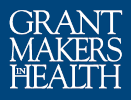The Final Reconciliation Package: Implementation of Key Provisions
On July 4, 2025, H.R. 1, the One Big Beautiful Bill Act, was signed into law. The implementation dates for key health care provisions in the law vary, with some taking effect immediately upon passage and others being implemented over several years. This resource details key dates for the implementation of the law’s most significant health care provisions.
Deadlines in Health-Related Executive Orders and Presidential Memoranda
This GIH policy resource details many of the health-related executive orders issued by the administration and includes a calendar of upcoming deadlines for when those orders are expected to be implemented.
Beyond the Exam Room: Impacting Health Outcomes Through Civic Engagement
August marks Civic Health Month, a time to showcase the link between voting and health and celebrate efforts that ensure every voter can support their community’s health at the ballot box. At the same time, the United States is grappling with a health care system ranked 37th globally despite consuming 17 percent of the country’s GDP. With 26 million Americans uninsured and 43 million underinsured, the gap in access to care continues to widen. This crisis will deepen as critical ACA subsidies expire at the end of 2025, potentially leaving 3.8 million more Americans without coverage, in addition to new federal cuts to Medicaid and changes to how coverage is accessed through the health insurance marketplace, which could result in as many as 20 million Americans losing their health insurance.
2018 Terrance Keenan Institute Fellows Named
GIH is delighted to announce the 2018 Terrance Keenan Institute for Emerging Leaders in Health Philanthropy class of fellows.
StartStrong: Transforming the System of Care to Reduce Infant Mortality
It is a dichotomy to think that the United States, with the sophisticated medical care available here, has higher infant mortality rates than most other developed countries. A higher rate of premature births in the United States is the main reason for this poor ranking.
Recounting Thirty Years of Health Philanthropy
In 1987, the opportunity to lead a new health foundation was appealing enough for me to leave a partnership in a thirty-five-person law firm. I believed the new job would permit reacquaintance with my wife and three young children and the opportunity to make the world a little better.
How Foundations Can Accelerate Health System Improvement by Investing in Capacity Building Across Sectors
At a time when the health care system is facing a host of challenges, many with attributes that are impossible to solve alone, we see organizations from across the health and social sectors combining their skills and expertise through interesting partnerships to crack the “impossible” together.
Funding Upstream Solutions is Key to Remedy the Social Ills of Trauma
The root cause philanthropy cannot ignore, regardless of the outcomes we seek or the population we serve, is exposure to trauma. Trauma is defined as the effects of a single event, a series of events, and ongoing circumstances that are experienced or perceived as physically or emotionally harmful and life threatening.






